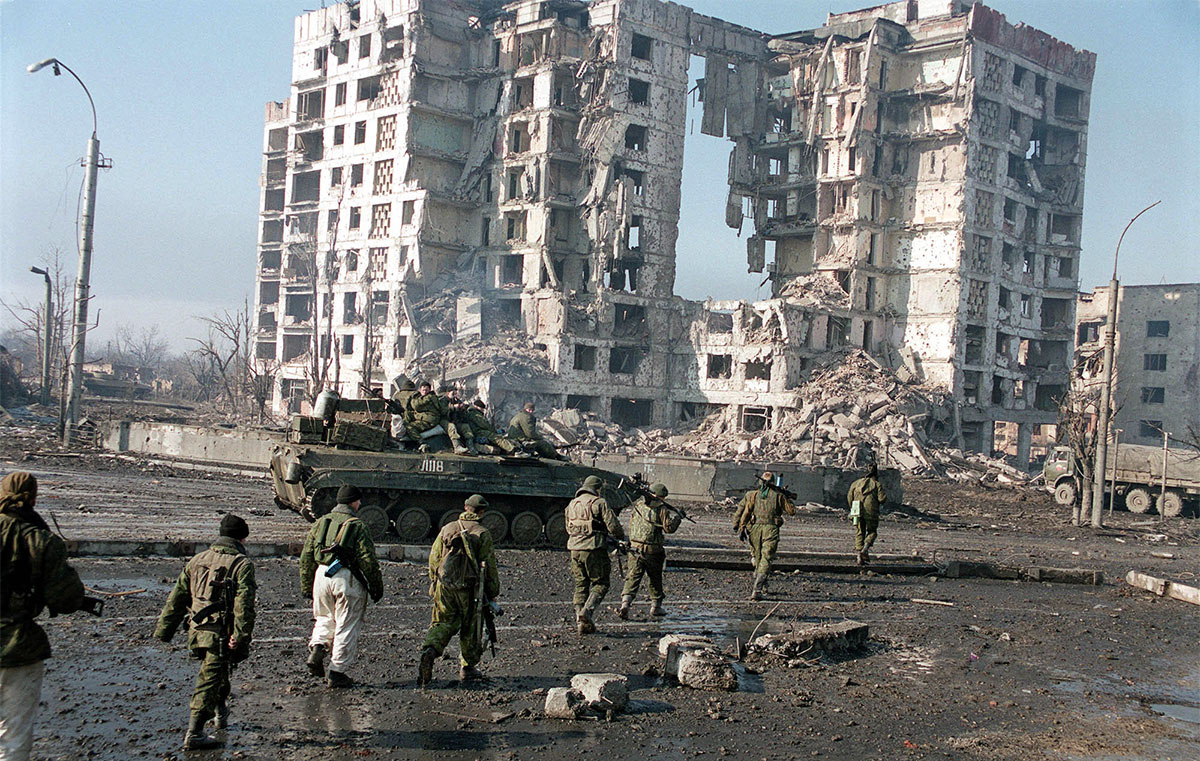The Four-Floor War
 [Image: Russian troops in Grozny, February 2000; image courtesy of AP].
[Image: Russian troops in Grozny, February 2000; image courtesy of AP].“U.S. land forces will eventually find themselves locked in fights within huge, dense urban environments where skyscrapers tower over enormous shanty towns, and these troops need more realistic training to operate within these future megacities,” Brigadier General Julian Alford of the U.S. Marine Corps Warfighting Laboratory explained earlier this month, as reported by Defense News.
It's war in the age of megacities: “We talk about the three-block war, but we are moving quickly to the four-floor war,” Alford adds.
We are going to be on the top floor of a skyscraper... evacuating civilians and helping people. The middle floor, we might be detaining really bad people that we’ve caught. On the first floor we will be down there killing them. ...At the same time they will be getting away through the subway or subterrain. How do we train to fight that? Because it is coming, that fight right there is coming I do believe with all my heart.The verticalization of Alford's metaphor—“the four-floor war”—is an interesting revision of the existing “three-block war” paradigm. In that earlier version, U.S. General Charles C. Krulak suggested that three separate and very different military goals—humanitarian assistance, peace-keeping, and “traditional warfighting”—could all occur within only three blocks of one another in the urban combat of the future. In his words, soldiers would be confronted by “the entire spectrum of tactical challenges in the span of a few hours and within the space of three contiguous city blocks.”
The idea that this is now a “four-floor” problem—that “the entire spectrum of tactical challenges” could now be experienced within the space of four floors of a single high-rise—is a dark indicator not only that our own everyday surroundings are now being modeled and war-gamed as sites of speculative combat, but also how terrifying full-scale architectural warfare would be. Battling upward through the interior of skyscrapers, perhaps even zip-lining from one tower to another, it would be Nakatomi space taken to its logical, militarized extreme.
Recall Mike Davis's observation from more than a decade ago that so-called Third World cities were being viewed as the “key battlespace of the future,” and that U.S. forces were thus preparing “for protracted combat in the near impassable, maze-like streets of the poverty-stricken cities of the Third World.” Davis elaborates on these points in an old interview with BLDGBLOG called Planet of Slums: An Interview with Mike Davis, Parts One and Two.
(Earlier on BLDGBLOG: Cities Under Siege. Story spotted via @peterwsinger).





Comments are moderated.
If it's not spam, it will appear here shortly!
Post a Comment